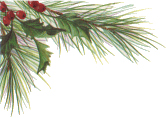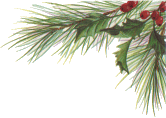|
Fraser Fir Tree Grading
In October 1989, the United States Department of Agriculture
issued the United States Standards for Grades of Christmas
Trees. These standards are:
US Preimium
(a) Characteristics typical of the
species;
(b) Butt trimmed; except for trees
graded "on the stump";
(c) Normal taper;
(d) Fresh;
(e) Clean;
(f) Healthy;
(g) Well shaped;
(h) Not less than heavy density;
(i) Handle length, unless otherwise
specified, shall be not less than 6 inches, or more than
1-1/2 inches for each foot of tree height. For trees
graded "on the stump", handle length will not be a
requirement of the grade;
(j) Three faces with not more than 1
minor defect. Remaining face may not have more than 1
minor defect.
US No. 1
(a) Characteristics typical of the
species;
(b) Butt trimmed; except for trees
graded "on the stump";
(c) Normal taper;
(d) Fresh;
(e) Fairly Clean;
(f) Healthy;
(g) Well shaped;
(h) Not less than medium density;
(i) Handle length, unless otherwise
specified, shall be not less than 6 inches, or more than
1-1/2 inches for each foot of tree height. For trees
graded "on the stump", handle length will not be a
requirement of the grade;
(j) Three faces with not more than 2
minor defects. Remaining face may not have more than 1
noticeable defect.
US No. 2
(a) Characteristics typical of the
species;
(b) Butt trimmed; except for trees
graded "on the stump";
(c) Normal taper;
(d) Fresh;
(e) Fairly Clean;
(f) Healthy;
(g) Well shaped;
(h) Not less than light density;
(i) Handle length, unless otherwise
specified, shall be not less than 6 inches, or more than
1-1/2 inches for each foot of tree height. For trees
graded "on the stump", handle length will not be a
requirement of the grade;
(j) Two adjacent faces with not more
than 3 minor defects. Remaining faces may not have
more than 2 noticeable defects.
Culls - Trees that don't meet the
standards for No. 2 trees
How do we grade our trees? We have combined the
Premium and #1 tree grades. Our Premium #1 trees meet
the requirements for the Premium tree grades by the USDA. Our #2 trees meet the USDA
requirements except that they tend to have heavy density
rather than medium and they have one defect rather than two.
If the hole is too noticeable, we consider this a cull.
We want you to be so happy with our trees that you come back
again. If your trees look better than your
competition, you are likely to sell more and in turn buy
more from us. We want to help you increase your sales.
What do we do with culls that can't be grown into better
trees? We use the tips to make wreaths and in this way
salvage the cost of growing the tree. We don't
send our customers culls!
|



